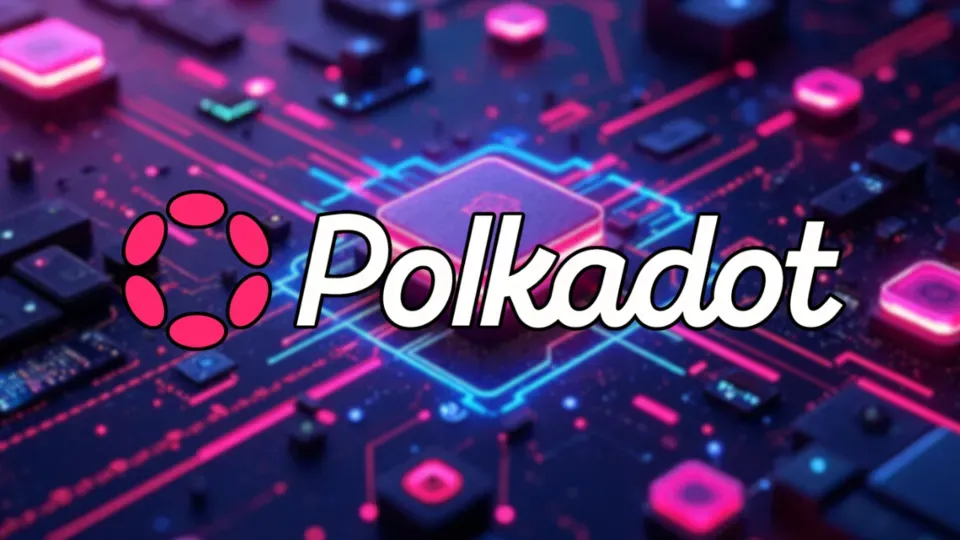Polkadot Coretime Chain Launch w/ Latest Polkadot Update!
Esta página aún no está disponible en tu idioma.

Polkadot’s evolution has been a continuous and deliberate process, aimed at enhancing the network’s flexibility and accessibility for projects and developers. With the latest update, Polkadot introduces the concept of the Coretime Chain, marking a significant shift from the traditional parachain and slot auction model. This new architecture promises to revolutionize how projects interact with and deploy on the Polkadot network, offering a more agile and adaptive alternative for development teams.
Goodbye Parachain Slot Auctions: Welcome Coretime Chain
For a long time, the slot auction and parachain model have been a hallmark of Polkadot. Under this scheme, projects had to compete for slots in auctions, allowing them to lease space on the network for a fixed two-year period. While effective in its early stages, this model presented certain limitations, especially for emerging projects with limited resources.
The Coretime Chain represents a paradigm shift. Instead of requiring a long-term commitment through auctions, projects can now access the Polkadot network high quality blockspace in a more dynamic and flexible manner. This new approach allows teams to lease time on the network according to their specific needs, reducing entry barriers and encouraging greater participation in the Polkadot ecosystem.
Coretime Implementation on Polkadot: A Crucial Milestone
While Coretime Chain was initially introduced on Kusama, the true test comes with its implementation on Polkadot. Kusama, known for its experimental and fast-paced environment, served as the perfect testing ground for this new technology. However, it is on Polkadot that the effectiveness of Coretime Chain will truly be tested, given that this network hosts a more active economy and a more established development base.
The implementation on Polkadot not only reflects the maturity of the technology but also the community’s confidence in its ability to handle the traffic and demands of a larger-scale network. With Coretime Chain’s arrival on Polkadot, development teams are expected to explore new possibilities and optimize their resources more efficiently.
Coretime Marketplaces: A New Expanding Ecosystem
One of the standout features of Coretime Chain is the introduction of specialized marketplaces. These marketplaces act as interfaces where users, development teams, and other ecosystem players can trade, buy, and sell Coretime efficiently. This system fosters a vibrant internal economy, providing the flexibility that many projects need to scale and operate effectively.
For example, on this websites itself, users can find detailed profiles of projects already leveraging Coretime, such as Lastic and RegionX. These profiles provide comprehensive information about each project, including descriptions, official links, and access to their profiles on platforms like X (formerly known as Twitter). These resources are essential for any team or individual interested in understanding how Coretime is being adopted within the ecosystem.
Coretime Chain Architecture: Diving into the Technical Details
For developers and tech enthusiasts, the architecture of Coretime Chain offers a fascinating field of study. Recently, Donal Murray, a renowned engineer at Parity Technologies, delivered a talk where he explained in detail how Coretime architecture will function and the associated pricing. The slides from this presentation, available on DaBlock.com, provide an in-depth view of the technical and economic aspects of Coretime.
Murray’s talk highlights how the new pricing structure and usage time will allow projects to optimize their operations, reducing costs and maximizing efficiency. This level of detail is crucial for teams planning to migrate or deploy new projects on Polkadot using Coretime Chain.
The Future of Polkadot: Beyond Coretime Chain
The implementation of Coretime Chain is just one more step in Polkadot’s continuous evolution. By the end of the next month the network is expected to be fully integrated with Coretime, and by 2025, Polkadot may be ready to launch the overall concept of Polkadot 2.0. This near future is full of promise, with developments that could redefine how we interact with blockchains.
Polkadot 2.0, although still in development, is shaping up to be a significant iteration that could solidify the network as an industry leader. Concepts such as interoperability, scalability, and decentralized governance will continue to be fundamental pillars in this evolutionary journey.
Conclusion: A New Horizon for Polkadot
The arrival of Coretime Chain on Polkadot marks an important milestone in the network’s history. This new model not only provides greater flexibility and accessibility for projects but also reflects Polkadot’s commitment to continuous innovation. By adopting Coretime Chain, Polkadot not only enhances its infrastructure but also opens up new opportunities for developers and projects across the ecosystem.

